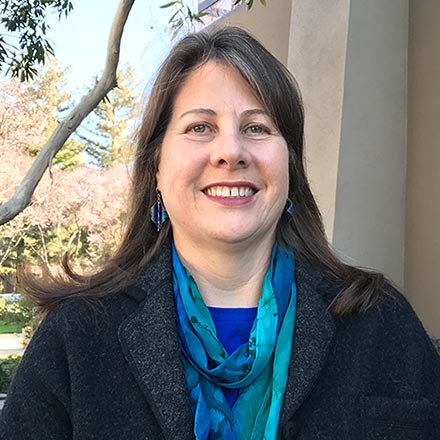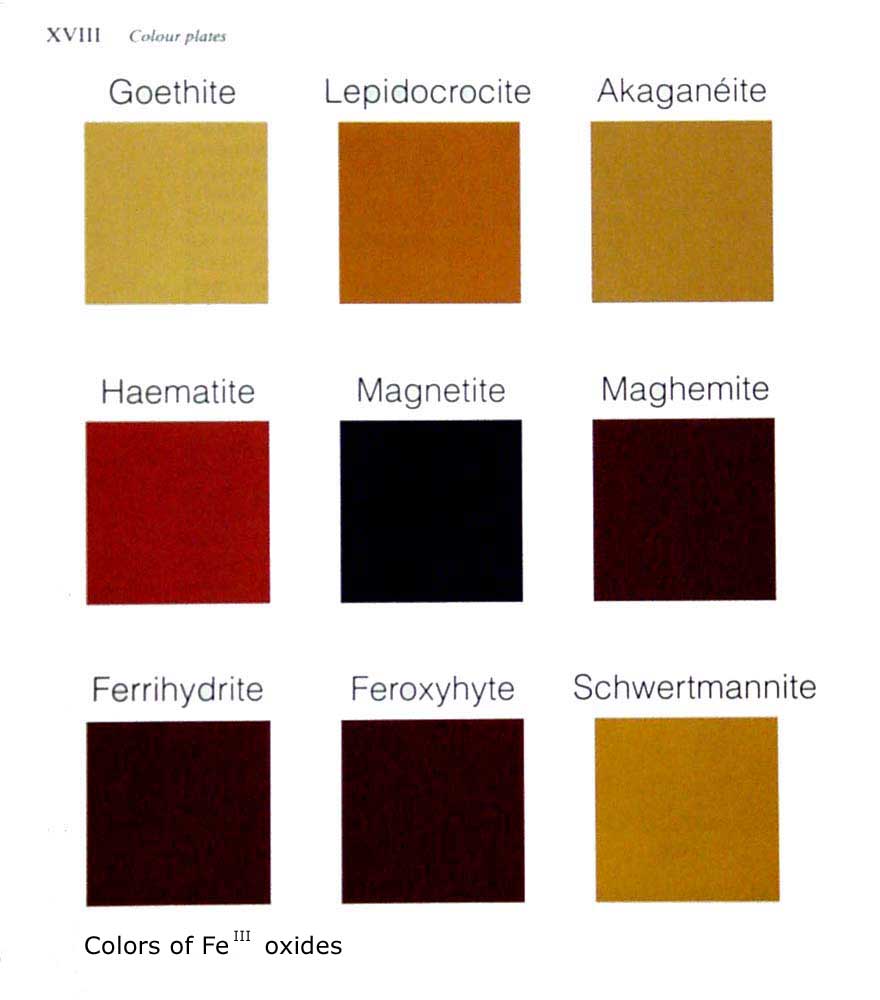
Ferric oxides make SETI Institute scientist, Dr. Janice Bishop see red. Actually, this iron-based mineral group makes everyone see red, for these are the compounds responsible for the ruddy palette we find in diverse natural substances from rust to human blood. Bishop's research into the properties of this mineral group may help scientists learn more about life on early Earth.
"Growing up in Livermore, I was fortunate." she recalls. "The sky was beautiful. Almost every night you could go out and look at the stars." Just southeast of the San Francisco Bay area, her home town not only featured dark skies, but a community of scientists that provided Bishop with role models. "Both my parents were scientists, and it seemed like all of my friends' parents were scientists, too," she recalls. "It just seemed like a normal career path."
Fascination with Chemistry and Mars
Her interest in astronomy and the stars led the high school student to participate in a summer program where she spent six weeks "looking through telescopes and taking pictures of asteroids." In high school, Bishop was also drawn to biology, and believed that would be her major in college. The young Stanford student soon found that she needed chemistry before she could take biology classes. "I stuck with chemistry because I found it much more fascinating," she explains.
In graduate school, Bishop found a way to work astronomy into her chemistry studies. While working on her Masters in Applied Earth Science (also at Stanford), Bishop held a job at NASA Ames Research Center as a lab assistant. This piqued her interest in planetary sciences and exobiology. She found herself conducting spectroscopic studies of minerals thought to exist on Mars.
She explains her early attraction to the Red Planet, "I focused on Mars rather than the moon because Mars has much more interesting chemistry." The Moon-and asteroids-have no atmosphere, and while the Moon is "not exactly dead," it does not have "much action." She was particularly intrigued by the interactions between the surface of Mars and its atmosphere.
Today, Bishop's research is a satisfying mix of field work and laboratory analysis primarily focused on—as she puts the question—"What is it like to be a rock sitting on the surface of Mars for billions of years?" To learn about the interactions of martian rock and atmosphere, she collects volcanic rock samples from Hawaiian mountains, which are exceptionally dry, and from Iceland, which is exceptionally cold. "It is difficult to find Mars-like environments on Earth," she notes, "those that are both very dry and very cold." But the effects of dry and cold conditions can be studied separately. Examination of changes wrought by the natural environment and laboratory experiments on the samples help us understand the alteration processes that may take place on the surface of Mars.
In the field and laboratory
At least once a year, Bishop travels to collect samples. "I'm always fascinated when I'm out in the field," she says. As a scientist who studies color, she is keenly aware of and appreciates color, and cites the Haleakala Crater on the Hawaiian island of Maui as a favorite place both for its aesthetic and scientific interest. Inside the crater are cinder cones that once exhaled sulfuric gasses. The rims and the insides of these cones are cloaked in vivid shades of pink, red, and orange—colors resulting from the iron oxide chemical reactions taking place on their surface. "They're beautiful," Bishop said, "and studying their chemistry is very interesting."
Back in Mountain View, Bishop does some preparatory work on the samples in the laboratory, then takes them to one of the NASA-sponsored spectroscopy facilities (the one she uses regularly is at Brown University, where she earned her doctorate). These visits occur about twice a year and there she measures samples before doing "a lot of computer work analyzing the data." She compares samples from the field to pure minerals and to the surface of Mars (according to what we know from space craft data).
Bishop describes the measurement process, "The spectrometer is basically a box that you put the samples into." After purging the air, a process that takes usually 10-12 hours, the samples "get nice and dry like those that may be on Mars." A light source in the spectrometer is directed at the sample, and the reflected light is collected. "It's kind of like shining a rainbow on the sample," she explains. The sample absorbs light at certain colors —i.e. frequencies, where there are vibrational or electronic absorptions. "What's reflected is the initial spectrum with certain peaks in it. I'm interested in where these peaks are, because that tells me about the composition of the sample-what minerals are present."
NAI project
Bishop's work with iron oxide compounds led to her current work on the Institute's NAI (NASA Astrobiology Institute) project in collaboration with NASA Ames biologist, Dr. Lynn Rothschild. The flash of insight from which the project grew reflects the powerful synergy of interdisciplinary science.

While sitting in a lecture by Rothschild about her work on photosynthetic organisms, Bishop noticed something interesting about the spectra of the pigments the organisms use to absorb energy. The spectra had peaks in the visible region in certain locations and Bishop suddenly realized that these peaks were inversely related to those of the iron oxides she studied. "It was like looking at my spectra upside down," she recalls. "I realized that these organisms needed the light in the area where my samples would let the light penetrate, and the organisms were damaged by the light in the areas where my samples would protect them. My samples would provide a nice little shelter for these organisms."
Bishop describes most iron oxides as molecules of ferric iron (3+) surrounded by six atoms of oxygen. Depending on the specific configuration, each mineral will have a slightly different color. In the lab, Bishop studies the influence of their structure upon their color, and how the structure and color can influence the specific radiation that reaches photosynthetic organisms covered by ferric oxides.
Understanding life on early Earth
Bishop's project will help us understand how life evolved on early Earth. Says Bishop, "Photosynthetic organisms evolved at about 2 billion years ago, and we don't really know when or how, but we know that there were isolated populations." At some point, photosynthetic organisms multiplied, and concurrently, early Earth experienced a number of interesting chemical changes. "Iron oxides were forming," she explains, noting the banded iron formations that formed in many places during this time. As this activity took place, the oxygen level of the atmosphere also rose.
Bishop sums up this NAI project, "We're exploring the links between the iron oxides, the photosynthetic organisms, and the oxygen in the atmosphere. This will help us understand if certain kinds of iron oxides might have enabled the photosynthetic organisms to really take off and grow, and survive better than before."
Advice for young scientists
Asked what she would say to a young scientist, Bishop recalls an anecdote from her early life. Until she entered college, she had never studied geology and was, in fact, completely unaware of the field. When a high school aptitude test matched her interests with geology, she didn't seriously consider it, and assumed she would pursue biology and astronomy further. In her junior year at Stanford, she took part in an advising program for freshmen. "I was assigned to the Dean of Earth Sciences, Dr. Allan Cox, who spent many years in the field as a geologist. He told such fascinating stories, mostly for the benefit of the freshmen to open their eyes to the wonder of our own Earth. I thought, wow this is great, this is what I want to do, this is so interesting!"
"Younger people who are thinking of science should take as much math as possible and explore many options," she believes, and notes that there are far more interesting possibilities out there than may seem obvious. It is important, she stresses, to "keep your mind open."
Dr. Bishop is a Co-Investigator on the CRISM spectrometer that will be flying to Mars in 2005 and a trustee for SSPI, a high school astronomy program www.summerscience.org
Interview clips with Janice Bishop:






